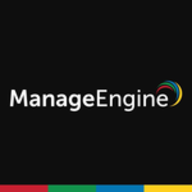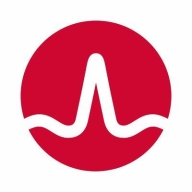


Find out what your peers are saying about ManageEngine, Broadcom, Quest Software and others in Client Desktop Management.
| Product | Market Share (%) |
|---|---|
| ManageEngine Endpoint Central | 28.0% |
| Symantec Client Management Suite | 16.9% |
| Clarity CA | 10.2% |
| Other | 44.900000000000006% |
| Product | Market Share (%) |
|---|---|
| Microsoft Intune | 30.5% |
| Workspace ONE UEM | 12.4% |
| ManageEngine Endpoint Central | 10.3% |
| Other | 46.8% |
| Product | Market Share (%) |
|---|---|
| Symantec Client Management Suite | 16.9% |
| ManageEngine Endpoint Central | 28.0% |
| Clarity CA | 10.2% |
| Other | 44.900000000000006% |



| Company Size | Count |
|---|---|
| Small Business | 25 |
| Midsize Enterprise | 14 |
| Large Enterprise | 35 |
| Company Size | Count |
|---|---|
| Small Business | 116 |
| Midsize Enterprise | 46 |
| Large Enterprise | 152 |
ManageEngine Endpoint Central is a unified endpoint management (UEM) solution offered by ManageEngine, a division of Zoho Corporation. It is designed to help organizations efficiently manage and secure their endpoints from a centralized platform. Endpoint Central provides a comprehensive set of features and capabilities to streamline endpoint management and enhance security across diverse devices and operating systems.
ManageEngine Endpoint Central Features:
ManageEngine Endpoint Central Benefits:
Reviews from Real Users
PeerSpot user, Sr Engineer Administrator at a university, says that "Its cross-platform capabilities and the ability to do both OS-level patching and third-party patching are valuable. It is difficult to find a software product that will do all that for you out of the box, and you don't have to do any configuration other than your initial setup. Once you do that, there is a very minimalistic approach to getting it operational. You can have it up and running within a 20-minute time span."
Park Armstrong, Chief Technical and Solution Architect at Vertigo Inc., writes that ManageEngine Endpoint Central is “Helpful for identifying and filling the gaps and meeting compliance needs, but each of their product works as an independent product and lacks integration”.
Microsoft Intune provides centralized management of mobile devices and applications, ensuring security, compliance, and productivity through integration with Microsoft services like Microsoft 365 and Azure Active Directory.
Organizations use Intune for managing mobile devices and applications, enhancing security and compliance across platforms. With features like single sign-on, conditional access, and zero-touch deployment via Autopilot, it facilitates efficient operations. Intune's scalability, easy enrollment, and capabilities such as remote wipe support diverse device management, offering robust data protection and efficient operation. Despite its features, improvement areas include reporting, compatibility with non-Microsoft devices, and better support for macOS and Linux devices.
What are the key features of Microsoft Intune?
What benefits should users look for in reviews?
In industries such as finance, healthcare, and education, Microsoft Intune is implemented to ensure secure and compliant device management. Companies leverage its capabilities to deploy security policies and manage both corporate-owned and BYOD environments, facilitating a unified approach to data protection and compliance.
Symantec Client Management Suite automates time-consuming and redundant tasks for deploying, managing, patching, and securing desktops and laptops so organizations can reduce the cost and effort of managing Windows, Mac, Linux, and virtual desktop environments. Client Management Suite 8.0 brings significant new functionality and enhancements to this already feature rich solution. Before covering what’s new in version 8.0, here’s a quick overview of some of the key capabilities of Client Management Suite.
Symantec Client Management Suite helps reduce the cost of deploying and managing desktops and laptops from a centralized location in your environment. The solution offers OS deployment, configuration, PC “personality” migration, and software deployment across hardware platforms and OS types to reduce end-user downtime and increase IT efficiency through automated, repeatable deployment processes.
Symantec Client Management Suite centralizes and simplifies patch management. With this solution you can detect and repair security vulnerabilities for Windows, Mac, and Linux operating systems as well as Microsoft and over 50 non-Microsoft applications. Patch automation can further streamline the process to ensure patches are applied as quickly as possible. Real- time compliance and detailed reports help ensure smart, fast decisions can be made to keep endpoints protected and maximize productivity.